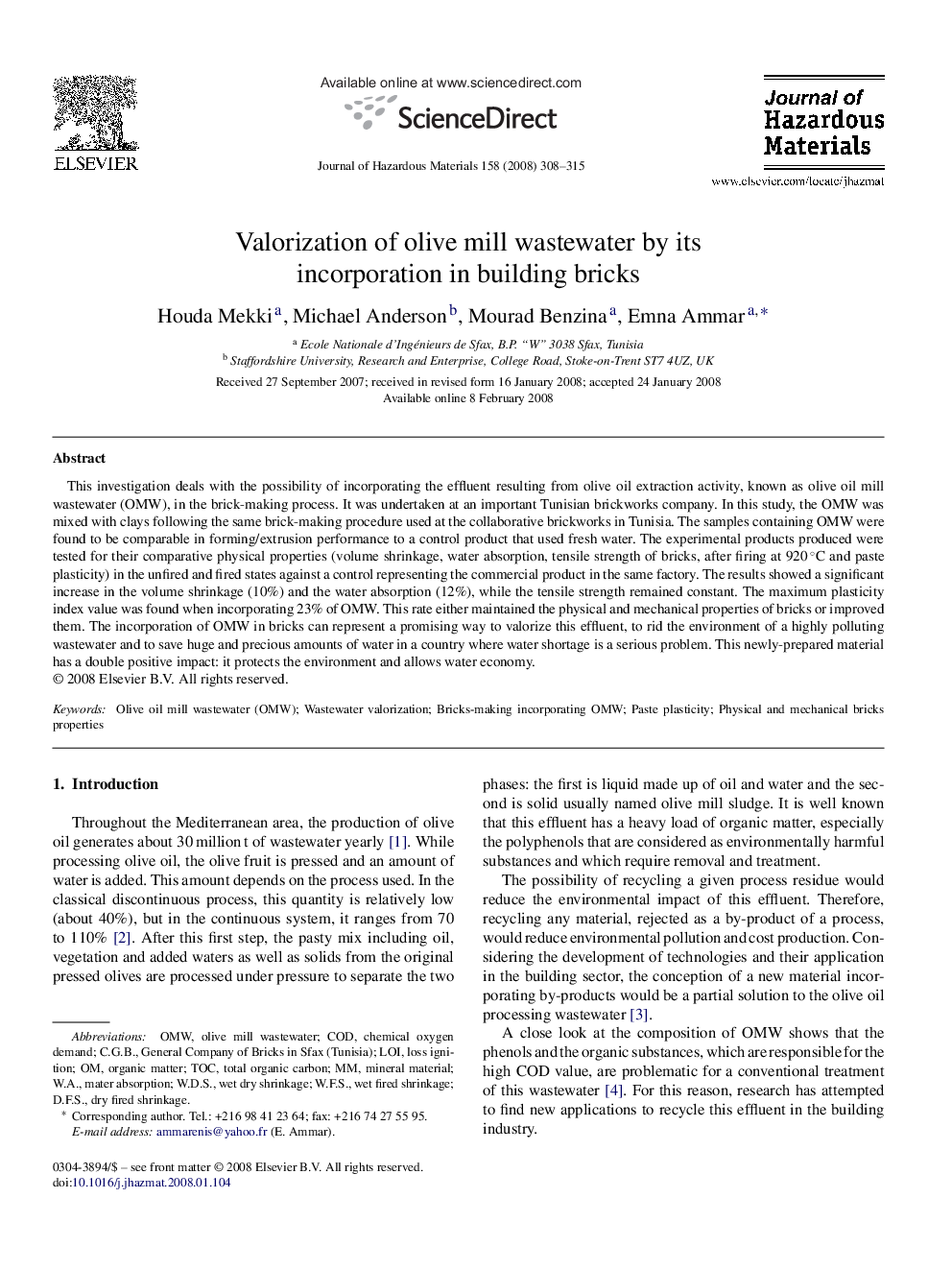| Article ID | Journal | Published Year | Pages | File Type |
|---|---|---|---|---|
| 583293 | Journal of Hazardous Materials | 2008 | 8 Pages |
Abstract
This investigation deals with the possibility of incorporating the effluent resulting from olive oil extraction activity, known as olive oil mill wastewater (OMW), in the brick-making process. It was undertaken at an important Tunisian brickworks company. In this study, the OMW was mixed with clays following the same brick-making procedure used at the collaborative brickworks in Tunisia. The samples containing OMW were found to be comparable in forming/extrusion performance to a control product that used fresh water. The experimental products produced were tested for their comparative physical properties (volume shrinkage, water absorption, tensile strength of bricks, after firing at 920 °C and paste plasticity) in the unfired and fired states against a control representing the commercial product in the same factory. The results showed a significant increase in the volume shrinkage (10%) and the water absorption (12%), while the tensile strength remained constant. The maximum plasticity index value was found when incorporating 23% of OMW. This rate either maintained the physical and mechanical properties of bricks or improved them. The incorporation of OMW in bricks can represent a promising way to valorize this effluent, to rid the environment of a highly polluting wastewater and to save huge and precious amounts of water in a country where water shortage is a serious problem. This newly-prepared material has a double positive impact: it protects the environment and allows water economy.
Keywords
Related Topics
Physical Sciences and Engineering
Chemical Engineering
Chemical Health and Safety
Authors
Houda Mekki, Michael Anderson, Mourad Benzina, Emna Ammar,
